This article was co-authored by Natalia S. David, PsyD. Dr. David is an Assistant Professor in Psychology at the University of Texas Southwestern Medical Center and a Psychiatry Consultant at Clements University Hospital and at Zale Lipshy University Hospital. She is a member of the Board of Behavioral Sleep Medicine, the Academy for Integrative Pain Management, and the American Psychological Association’s Division of Health Psychology. In 2017, she received the Baylor Scott & White Research Institute’s Podium Presentation Award and scholarship. She received her PsyD from Alliant International University in 2017 with an emphasis in Health Psychology.
There are 12 references cited in this article, which can be found at the bottom of the page.
This article has been viewed 22,187 times.
You may have a fear of doctors because you are afraid of getting bad news. Or you may have a phobia of doctors because you are afraid of needles and the sight of blood. Having a fear of doctors, also known as “white coat syndrome,” can be a common issue among adults and children. To overcome your fear, you can adjust your routine before visiting the doctor and use tactics to stay calm during your visit. If your phobia of doctors is severe, you may try alternative therapies for your fear.[1]
Steps
Adjusting Your Routine Before a Doctor’s Visit
-
1Call your doctor and tell them you have a phobia. Before you go to the doctor’s, call their office and let them know you have a fear of doctors. Explain your phobia as well as what you are afraid of specifically. The doctor should try to accommodate your phobia and provide options to make you feel more comfortable.[2]
- For example, you may tell the doctor, “I have a fear of needles and enclosed spaces. What can you do to help me feel more comfortable?” They may then outline a few options to help you feel less stressed about coming to your appointment.
-
2Request a shorter wait time at the doctor’s office. You may have a fear of enclosed spaces, such as the doctor’s waiting room, and dislike the anxiety of waiting a long time for the doctor. Remedy this by asking for a shorter waiting time at the doctor’s office. Waiting for five minutes rather than 15 minutes can make all the difference, especially if it will help to calm your nerves before your appointment.[3]
- You may make your appointment time earlier in the morning, such as the first open slot in the day, so you have a very short wait time.
Advertisement -
3Ask a friend or loved one to come with you on the visit. For moral support, ask a friend or a loved one to come with you on your doctor’s visit. This can help to quell your nerves and make you less fearful of the doctor. The friend or loved one may sit with you in the waiting room and accompany you into your appointment.
- Make sure your doctor is comfortable with you bringing a friend or loved one with you into your appointment. Most doctors will be fine with this, especially if it will help to calm your fears.
- If you are a parent and your child has a fear of doctors; you may accompany them into the appointment, so they are less afraid.
-
4Go to the same doctor every visit. Consistency can be a big part of feeling comfortable and secure. Try to make appointments with the same doctor every time so you can grow more comfortable with them. Going to the same doctor will also ensure they know about your phobia and can take steps to make you feel more at ease during your appointments.
- You may book several appointments with the same doctor, spread out over the year, to ensure you see them on a regular basis. This can help you to confront your fear in a safe way.
Staying Calm During the Doctor’s Visit
-
1Bring a comfort item with you to the visit. To help you feel less afraid during your doctor’s visit, carry a comfort item. Look for an item that makes you feel secure and calm. Carrying it with you can help you feel less afraid.[4]
- This could be a stress ball that you squeeze in your pocket or a small stuffed animal that you hold during the visit. Stuffed animals, such as teddy bears, can be a good comfort item for children who are afraid of the doctor.
-
2Make an official agreement with the doctor. To help you feel more comfortable, you can ask the doctor to agree to pause if you start to feel frightened. You may ask them before the appointment begins to listen to you if you say "pause" and to give you time to get comfortable before they resume the check up.
- For example, you may say to the doctor, "Would you mind pausing if I say pause at all during the appointment?" or "Can you agree to pause for a moment if I say pause?"
-
3Do deep breathing and meditation to stay calm. Some people find it helpful to do stress-releasing tactics like deep breathing and meditation. You may do this in the waiting room before your appointment or before you get in your car to drive to the appointment. Deep breathing and meditation can help to calm you down and feel less fearful of your doctor’s visit.[5]
- Deep breathing can be done by taking deep inhales and exhales from your diaphragm. Hold the inhales for four counts and then exhale for four counts. Repeat this several times until you feel calm.
-
4Ask your doctor to explain what they are doing during the visit. If you think it will help you feel less fearful, get the doctor to explain their actions as they are doing them. This can help you feel more secure and in control of the situation. Your doctor will narrate their actions, such as tests on certain parts of your body, to put you at ease.[6]
- For example, if your doctor is about to test your blood pressure, they may say, “I am now going to test your blood pressure. Are you ready?”
- If you think that the doctor's explanations will make you more anxious, you might ask your doctor to share only what is necessary for you as a patient to know. You can say, "It might actually make me feel better if you didn't explain the procedure to me. Just let me know what is important for me to understand about my health."
Using Alternative Therapies for Your Fear
-
1See a trained therapist about your phobia. If your fear of doctors is severe and preventing you from going to see your doctor, it may be time to reach out to a trained therapist. Look for a therapist who specializes in phobias and who has experience working with patients who have phobias. The therapist can help you talk about your phobia in a safe space and address it.[7]
- The therapist may suggest talking through the phobia to help you find the root cause. Then, they may suggest different tactics you can try to address the phobia.
-
2Try exposure therapy. Exposure therapy involves confronting your fears in a safe, supportive environment. You may first be shown images of stethoscopes or syringes to expose you to your fear. Then, the therapy will move on to showing you videos of medical procedures. From there, you may stand outside the hospital or your doctor’s office with your therapist. Through this exposure, you will gradually become less fearful of doctors.[8]
- Exposure therapy has been shown to be effective for people with a phobia. You will need to find a trained therapist who is skilled in exposure therapy to try this treatment.
-
3Use positive affirmations. Positive affirmations are another way for you to work on overcoming your fear of doctors. You can say positive affirmations before you go to the doctor’s office or before you enter a hospital. You can also try repeating positive affirmations in your head during your doctor’s appointment, so you feel less afraid.[9] [10]
- For example, you can repeat positive affirmations like “I am relaxed around doctors,” “I am comfortable talking to doctors,” “My health is important to me,” and “I like doctors.”
-
4Practice relaxation techniques. Fear often breeds anxiety. To help reduce your anxiety, you can teach yourself relaxation techniques to use when you feel yourself becoming nervous, anxious, tense, or afraid.[11]
- Slow and deep breathing can help calm your nerves. Practice by sitting straight with a hand on your stomach and a hand on your chest. Breathe deeply into your lungs. The hand on your stomach should rise while the hand on your chest should not. Try counting ten breaths.
- Once you've learned deep breathing, you might want to try mindfulness meditation. Sit straight with your eyes closed. Focus on your breath as you inhale and exhale. Then start noticing other sounds and sensations. If you feel yourself becoming anxious, think about your breathing again.
- Try progressive muscle relaxation. Start by tensing every muscle in your right foot. Hold it for a few seconds before relaxing. Repeat with your left foot before moving on to all of the other muscles in your body. This can train you to relax your muscles when they are tensed and tight.[12]
-
5Learn grounding exercises. Grounding techniques are useful for when you are experiencing extreme anxiety. They can help you calm down by using activities and sensory details to reduce your anxiety.[13]
- Try touching and looking around at the objects around you. Describe them as you go through them. For example, in the doctor's office, you might feel the paper lining the chair. Describe its texture. Look up at the artwork, and describe their colors in your head. Name objects in the room, such as the receptionist's desk, the magazines, or the sink.
- You can also give yourself a topic, such as zoo animals or state capitals. Try to name as many as you can. This activity can help you refocus your thoughts.
References
- ↑ https://www.bloodpressureuk.org/your-blood-pressure/getting-diagnosed/getting-a-blood-pressure-check/
- ↑ https://my.clevelandclinic.org/health/diseases/22191-iatrophobia-fear-of-doctors
- ↑ https://psychcentral.com/blog/the-psychology-of-waiting-in-lines-8-reasons-that-the-wait-seems-long
- ↑ https://my.clevelandclinic.org/health/diseases/22389-nosocomephobia-fear-of-hospitals
- ↑ https://psychcentral.com/anxiety/doctor-anxiety
- ↑ http://www.anxietycoach.com/fear-of-doctors.html
- ↑ https://www.helpguide.org/articles/anxiety/phobias-and-fears.htm
- ↑ https://my.clevelandclinic.org/health/diseases/22191-iatrophobia-fear-of-doctors
- ↑ http://www.freeaffirmations.org/fear-of-doctors-positive-affirmations
- ↑ https://www.pennmedicine.org/news/news-blog/2017/may/facing-our-fears-why-it-works
- ↑ https://www.health.harvard.edu/mind-and-mood/six-relaxation-techniques-to-reduce-stress
- ↑ https://www.helpguide.org/articles/stress/relaxation-techniques-for-stress-relief.htm
- ↑ https://www.urmc.rochester.edu/behavioral-health-partners/bhp-blog/april-2018/5-4-3-2-1-coping-technique-for-anxiety.aspx

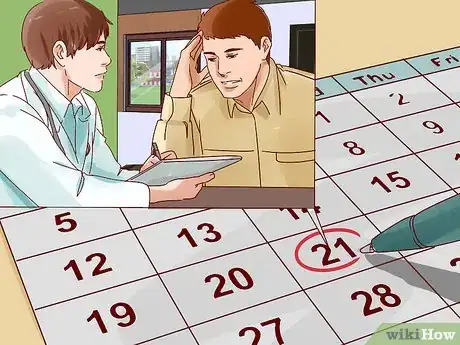



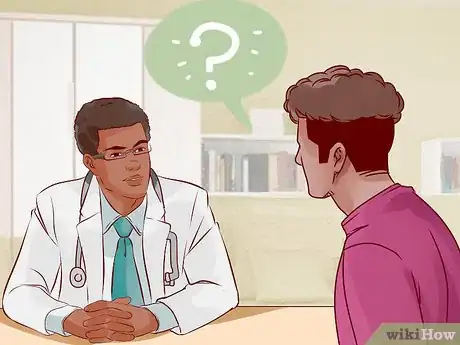
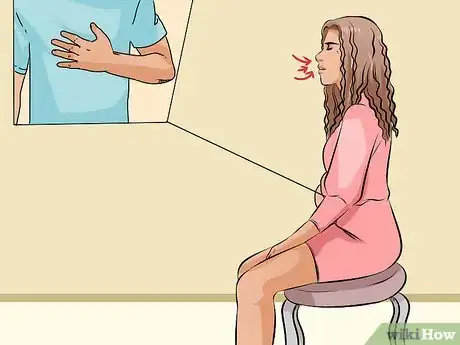

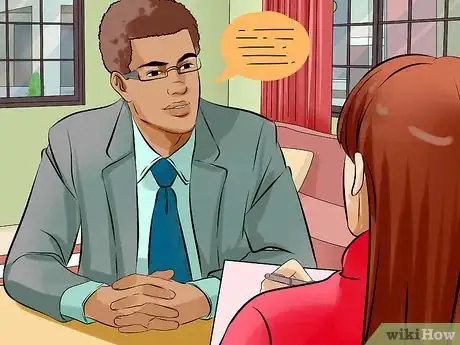
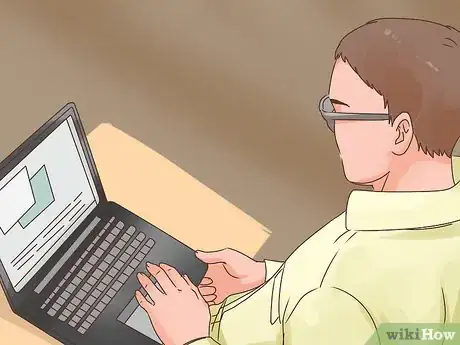
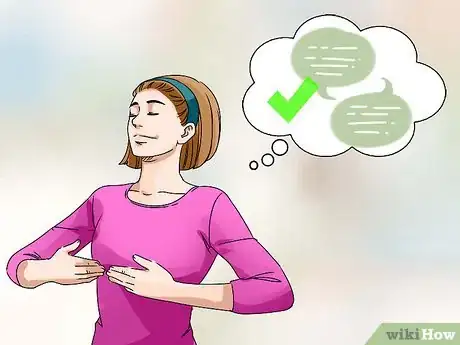







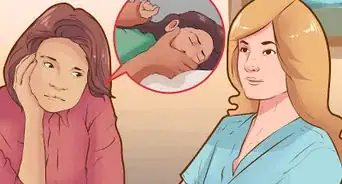



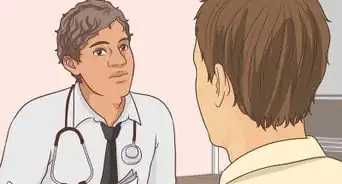

















































Medical Disclaimer
The content of this article is not intended to be a substitute for professional medical advice, examination, diagnosis, or treatment. You should always contact your doctor or other qualified healthcare professional before starting, changing, or stopping any kind of health treatment.
Read More...